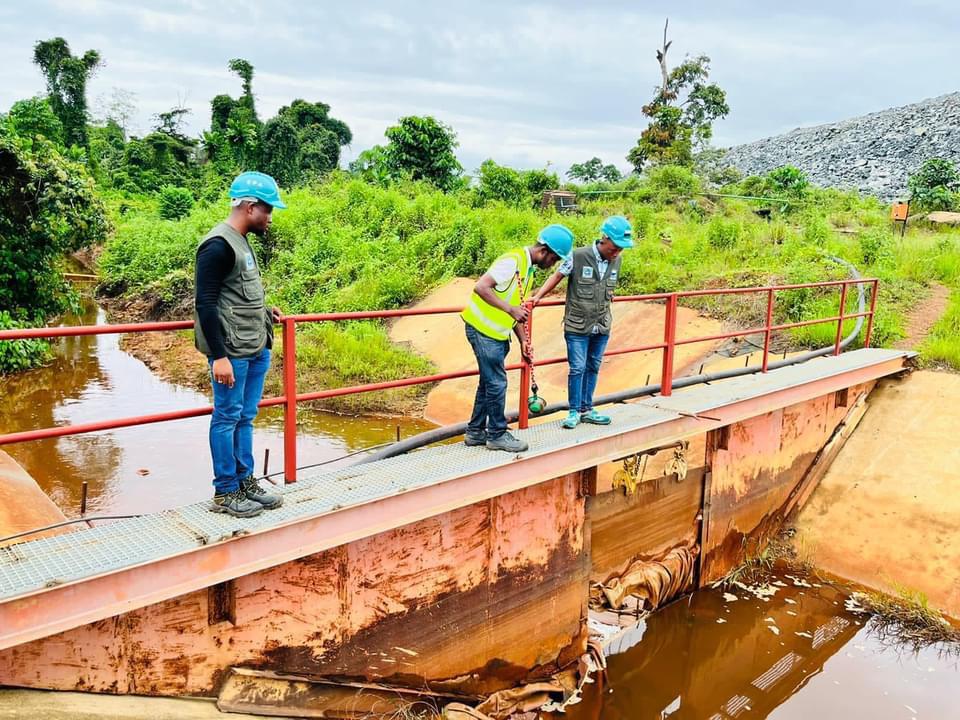Top: The Environmental Protection Agency has flipped its initial findings that Bea Mountain Mining Corporation caused the pollution of rivers in Grand Cape Mount County. Picture credit: Environmental Protection Agency/Facebook
By James Harding Giahyue
MONROVIA – The Environmental Protection Agency of Liberia (EPA) has cleared Bea Mountain Mining Corporation over the pollution of rivers in Grand Cape Mount, reversing its earlier findings that a waste facility operated by the company had polluted waterfronts in the western county.
“A technical team from the agency completed a final round of environmental assessment and water-quality testing on the Marvoe Creek downstream the New Liberty Goldmine… and is pleased to inform you that all facilities tested were appreciably below the permissible level set up by the EPA,” the agency said in a statement on Monday. It said it finalized its investigation in July.
The statement did not say what led to the reversal of the initial findings. The EPA had said it would conduct a final report only to find out what led to the death of fish, not a fresh round of investigation. However, it did not say what killed the fish.
The new findings are the complete opposite of the EPA’s preliminary findings back in June after villagers discovered dead fish and a dog in rivers they use for drinking.
It said at the time that “excess” cyanide, a chemical used to wash gold but dangerous to human health, spilled from the facility at the company’s New Liberty Gold Mine in Kinjor and emptied into the rivers.
“The analysis results showed higher than [the] permissible level of free cyanide (with source from the BMMC tailing storage facility),” it had said. “The presence of excess cyanide led to the contamination of the water sources and that the situation has severely disrupted and injured the livelihood of the communities that depend on those water resources...”
BMMC had denied the results, saying EPA’s findings were “inconclusive and filled with analytical gaps.”
“We are confident and particularly reaffirm our position of being in no breach of any required scientific standards. We note that the EPA has found no evidence of damage to or any spill or irregular discharge from the [tailing storage facility],” it said at the time.
The EPA then reacted that two days later that its preliminary findings were “based on scientific analysis and data collected by well-trained technicians and scientists in the field.”
It had warned villagers not to drink from the water, asking the company to continue to supply affected communities.
The rivers are now consumable, the statement said, thanking villagers for cooperating with authorities, and the company for its support to villagers during the period of investigation.




